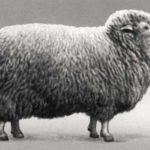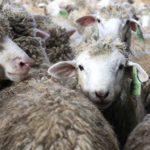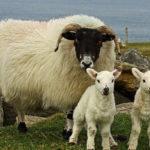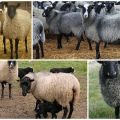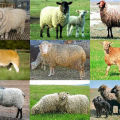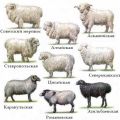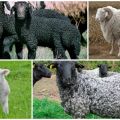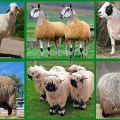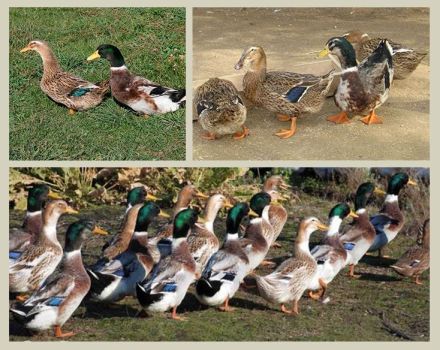Description and characteristics of Kuibyshev sheep breed, maintenance rules
Kuibyshev meat-wool breed of sheep is unpretentious to feed and keeping conditions. These animals can graze in the meadow throughout the warm season, and before wintering they can be sent to the slaughter. For six months of life, they gain 40 kg of weight. The slaughter yield of the most tender meat in such animals is 50 percent, that is, 20 kilograms (at 6 months of age). Sheep wool is used in the knitwear industry to make warm clothes.
History of the breed
Kuibyshev sheep are from the USSR, or rather, these animals were bred by Soviet zootechnicians. Work on obtaining a new breed was carried out in the 30-40s of the 20th century. The project leader was the scientist Alexander Vasiliev, who was awarded the Stalin Prize for his scientific works. Breeding studies were carried out on the basis of collective farms in the Kuibyshev region.
The basis was taken rams of the English meat-wool breed Romney-Marsh and coarse-wool Cherkasy sheep from the Samara region. The purpose of breeding: obtaining animals with a half-thin uniform wool and large meat forms. In addition, the new breed had to be highly adaptable to hot summers and cold winters.
The resulting hybrid sheep were crossed among themselves, rejecting unproductive ones, until they achieved the desired result. The sheep obtained in the course of selection were named Kuibyshev. The new breed began to be bred in different republics of the USSR and even abroad.
The appearance and characteristics of Kuibyshev sheep
The Kuibyshev breed has a large skeleton, a muscular body, a long and barrel-shaped body, a straight and large back, a short fleshy neck, an oblong head with a convex forehead. Hornless rams and sheep. Legs set wide apart, short, with strong hooves, well developed thighs. The tail is long, usually docked, without fat reserves. The ears are short and erect.

Animals are of the early maturing type. Lambs are born weighing 3-4 kg, and during the sucking period, that is, in just 4 months, they gain a mass of 30 kg. In six months, animals weigh 40 kilograms. Slaughter meat yield is about 50 percent. At 1.5 years, the weight of adult sheep is 60-70 kg. Animals are sent for slaughter at 12-18 months, they are not kept longer, since their meat becomes tougher with age. For the sake of wool, sheep can be grown for longer. Animals can gain weight equal to 100-130 kg.
Representatives of the Kuibyshev breed have good quality wool. It is light, long (from 12 to 15, sometimes up to 25 cm), uniform, semi-thin. The coat densely covers the entire body (except for the legs) and reaches the eyes on the head. It is used to make woolen garments on an industrial scale.
Up to 6 kg of wool is cut from one ram per year. The productivity of females is slightly lower. Ewes give birth to 1-2 lambs. After lambing, they give up to 1-2 liters of milk per day (fat content 5-6 percent), it can be used to make feta cheese and cheeses.
Main pros and cons
Maintenance rules and care
Kuibyshev sheep have to graze on pasture during the whole warm season (from early spring to late autumn). Representatives of this breed can be in the meadow in hot and cold weather for 15 hours a day. At night, the animals are driven into the premises (sheepfold, sheepfold, barn, barn). It is not recommended to take them outside in the rain.
In winter, the sheep move to stall keeping. They are fed mainly with hay 2-3 times a day. Roots and grains are given as an additive. A manger for hay, feeders for vegetables and drinkers for water are installed in the room. In the barn where the animals are kept, the temperature is maintained at 5-20 degrees all year round. The sheepfold should be spacious, light, dry and clean. In daylight, sheep eat more and recover better. One animal should have 2-3 square meters. meters of area.
A ventilation system is installed in the room, rectangular windows are inserted in the upper part of the walls, near the roof itself. The sheepfold should be free of protruding nails and sharp objects that can injure animals. The bedding is laid on the floor. The straw is removed as it gets dirty, that is, once every 1-2 days.

Sheep are sheared 1-2 times a year. It is advisable not before winter, otherwise the room where the animals are will have to be heated. Sheep hooves should be trimmed once a year. To prevent diseases at 3 months of age, young animals undergo routine vaccination.
Sheep diet
In summer, Kuibyshev rams and sheep should graze in the meadow and eat fresh green grass, preferably legumes and cereals. These animals are not afraid of the heat, as in spring they are usually sheared before grazing. In the rain, it is better not to drive the sheep out to the pasture so that they do not catch cold.
Animals have a good appetite, they constantly have to change the place of grazing, as they quickly eat up all the vegetation.
In summer, they can be fed with beet and carrot tops, fresh vegetables, green cereals (oats, barley, wheat). The Kuibyshev sheep are given water to drink twice a day (about 5 liters per individual). The diet should contain salt and bone meal. Animals eat up to 6-8 kg of grass per day.
In winter, Kuibyshev sheep are kept indoors. They are fed with hay, vegetables, silage, grain, cake, meal, mixed feed. Salt or sweetened water is given between feedings. One animal per day eats 2-4 kg of hay, 1-2 kg of finely chopped vegetables (fodder and sugar beets, carrots, pumpkin), 200-500 grams of grain mixtures (oats, barley, corn) or 200 grams of mixed feed, 2-3 kg of silage. In winter, it is recommended that sheep be given pharmacy vitamins and minerals, and always salt (10 g per individual per day).
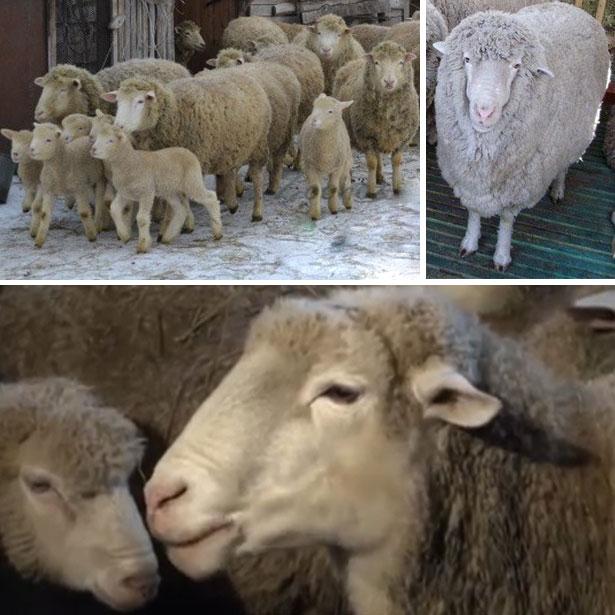
The nuances of animal breeding
Kuibyshev sheep reach sexual maturity at 6-8 months. True, females are covered at 1.5 years. The mating is carried out in the fall. Pregnancy lasts 5 months.1-2 lambs are born in the spring. Before lambing, the female is transferred to a cleaner and warmer room, where the air temperature is above 15 degrees Celsius. The ewes are given lighter feed. The area around the genitals and around the udder is cleaned of dirt and hair.
The presence of a person at the time of childbirth is desirable. Before lambing, the female's genitals swell, and the udder increases in size. After the birth of the lamb, the umbilical cord must be cut and the wound treated with iodine. The baby's nose must be cleaned of mucus. The female should be milked immediately. Lambs should eat 30-40 minutes after birth.
The afterbirth leaves after a few hours on its own. It is undesirable to pull it out of the uterus. The main thing is to bury the afterbirth so that the sheep does not eat it or poison it. Little lambs should be fed their mother's milk every 2-3 hours. They are kept under a sheep for up to 2-3 months. With age, lambs are taught first to hay, then to grass. It is forbidden to drastically change the diet of animals (diseases of the digestive system may occur).
Diseases and prevention from them
Sheep of the Kuibyshev breed are well adapted to frost, but cannot stand dampness. It is better not to take animals outside in cold, rain and slush, then they will not get sick with colds.
With proper feeding and quality feed, animals never develop diseases of the digestive system and metabolism. Nutritional errors can lead to bloating, poisoning, and the birth of non-viable lambs.
Infectious diseases pose a great danger. Infectious diseases are transmitted from sick animals and through contaminated food and drink. Infectious agents (bacteria and viruses) can kill animals. To prevent the most dangerous diseases, Kuibyshev sheep at the age of 3 months are vaccinated against anthrax, foot and mouth disease, smallpox, leptospirosis, plague, trichophytosis. Once or twice a year, animals are given drugs for worms and fleas.
Scope of distribution
Representatives of the Kuibyshev breed are bred mainly in Russia. There are numerous herds of these animals in the Samara, Ulyanovsk regions, as well as in Bashkiria, Mordovia, Tatarstan. Kuibyshev sheep are grown throughout the middle lane.

